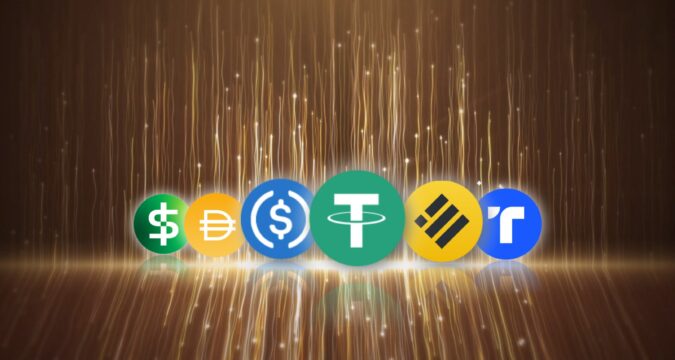
Stablecoins are a group of cryptocurrencies whose value remain relatively fixed, hence the name stablecoin.
One of the greatest hindrances to the use of cryptocurrencies for payment is their volatility, which is the rapid change in the price of the currency.
The idea behind stablecoins is to create a cryptocurrency that has a fixed value, even though it retains the quick transactions and low fees that characterize cryptocurrencies.
Stablecoins are pegged to something external that gives them value. For example, a stablecoin like USDT is pegged to the U.S Dollar, so it derives its value from the USD. It means every USDT in circulation is backed by a USD, making the price fixed at $1.
There are also stablecoins that derive their value from other things of value such as precious stones like gold and silver.
A third category of stablecoins are algorithmic stablecoins. In this guide, we dig deeper into what they are to help you get acquainted with them.
What are Algorithmic Stablecoins?
As the name implies, algorithmic stablecoins are governed by algorithms rather than being pegged to some fiat currency or commodity.
These are also referred to as undercollateralized stablecoins as opposed to centralized stablecoins like USDT.
The algorithm does two things at once – try to minimize the volatility of an asset such as the USD and also maintain the stbelcoin’s peg. An example is TerraUSD, a stablecoin that was short lived because of depegging.
A protocol called Terra was used to power TerraUSD and other stablecoins that use LUNA to keep their pegs. Algorithmic stablecoins have the advantage that they have transparent and auditable code, unlike their centralized counterparts.
How Algorithmic Stablecoins Work
Algorithmic stablecoins use a two-coin approach. One coin absorbs the volatility on one side, and the second tries to keep the peg. Terra used this method for its stablecoin TerraUSD prior to the crash.
It used two tokens; TerraUSD, a stablecoin, and Luna, a so-called governance token, which work in harmony to keep the price of TerraUSD fixed.
When TerraUSD price rose above $1, LUNA holders exchanged their Luna for the stablecoin and when the price of the stablecoin dropped, they exchanged it for $1 dollar of Luna.
This was a self-regulating system that ensured the price of the stablecoin remained at roughly $1. The problem with this system is that it is driven by demand and it will collapse if demand falls below a certain level.
Types of Algorithmic Stablecoins
There are three main types of algorithmic stablecoins as discussed below.
Rebasing Algorithmic Stablecoins
These algorithmic stablecoins handle price-elastic ERC-20 tokens. Their total supply is not fixed and is modified adaptively regularly by using an automatic rebase process that gradually stabilizes the price of the stablecoin around $1.
Seigniorage Algorithmic Stablecoins
This model uses two types of cryptocurrencies – stablecoin (coins) and seigniorage ownership (shares). The shares are used to increase the supply of coins when the price of a currency exceeds the peg.
In addition, thes stablecoins they issue a redeemable bond as an incentive for buyers when the price falls below the peg.
Fractional Algorithmic Stablecoin
These stablecoins have the attributes of both ully-algorithmic and fully collateralized stablecoins. While they are not overcollateralized, they are also not overly risky as is the case with fully algorithmic stablecoins.
The goal is to have a more stable stablecoin than either of collateralized or fully algorithmic stablecoin.
Pros of Algorithmic Stablecoins
Algorithmic stablecoins have some advantages, including the fact that they are truly decentralized. They also lack any asset requirement, which makes them less likely to have user error.
Cons of Algorithmic Stablecoins
Algorithmic stablecoins have an inherent weakness in their architecture. This exposes them to depegging risks as the factors controlling the peg are not under control.
They also require a certain level of demand to continue to function or the system will collapse.


